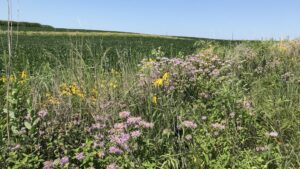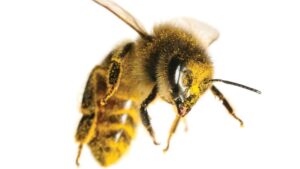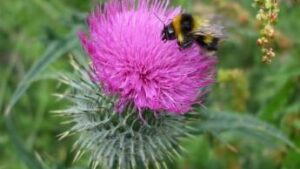The revitalization of integrated pest management (IPM) principles through contemporary sustainable agriculture initiatives is an opportunity to diversify and advance pest control strategies. The focus on expanded pest management tactics and new technologies will bring innovative solutions to growers, while also helping to maintain the effectiveness of existing pest management tools.
Through innovation (breeding, crop protection, fertility, and machinery) the agricultural industry has delivered increasing yields and continued to feed an ever-growing population, but challenges are evolving. The limits on land available for cultivation are being reached while at the same time over-reliance on some crop protection tools has led to resistance or regulation that may limit future utility. There is increasing emphasis on sustainable practices, protecting biodiversity, minimizing environmental impact, and regenerating soils while minimizing losses to pests, preserving yield gains, and expanding available pest management options. All while improving profitability and quality of life for farmers.

The principles of IPM were developed decades ago, originally focused on insect management and insecticide stewardship. Today, IPM principles are being applied across all disciplines of farm-pest management to address these evolving challenges. IPM is a holistic approach that considers all farming practices to discourage the development of economically damaging pest populations, managing pests as opposed to eliminating them after a problem has occurred. When intervention is required, all control alternatives are considered with regard to efficacy and minimizing risk to human health and the environment.
The principles and management strategies underlying IPM programs are shared with many of the more recent sustainability initiatives. Resistance management programs to preserve crop protection solutions (genetic traits and chemical controls) are essentially IPM, diversifying management tactics to prevent over-reliance on individual tools. Another example is Regenerative Agriculture, focused on soil health and biodiversity, looking to practices such as cover crops, rotational diversity, and the preservation of beneficial organisms to reach desired outcomes; a few of the many examples of practices long discussed in IPM that are gaining renewed consideration.
The concept of IPM and the synergies with other sustainability initiatives are largely apparent, however, execution can be more complicated. Diversifying crop rotations is a good example, simple in concept though there are often hurdles to implementation. The need for new equipment, or lack of infrastructure and marketing opportunities, absence of local agronomic expertise, local availability of quality seed or specialty inputs can be impediments. Of course, commodity and input prices will also play a significant role in crop selection. But increasing rotational diversity can positively impact many target areas. It can interrupt pest lifecycles reducing the need for intervention, optimizing chemical applications, and limiting environmental impact. Rotational diversity can support nutrient management, improve biodiversity, and overall soil health. Different crops in rotation enables the rotation of chemistries and pest resistant traits supporting efficacy maintenance and resistance management. Different crops, root structures, row spacings, planting direction can help with erosion control and overall soil health. The point is that like many of the decisions that go into IPM strategies, a practice as basic as crop rotation with known potential benefits takes careful consideration to implement in a way that is beneficial to overall farm management and the environment while remaining profitable. In practice, IPM is a continuum, programs are developed over time with experience and although the principles remain the same, each farm requires a unique approach. All growers are practicing some IPM principles, but the level of integration and the areas for improvement can differ greatly on individual farms.
In addition to current considerations, new technologies will support IPM to help maintain existing tools and to expand the options available for growers. Continued advancements in crop (and pest) genomics with developments in data collection and analytics, supports breeding technologies that promise to deliver improved genetic pest tolerance, faster and more efficiently. In recent years there has been significant investment in biologicals research which is resulting in more cost effective, efficacious, and scalable products. Digital agriculture and rapid advancements in data management and crop imagery will also support IPM. New tools are being developed for pest identification and real time monitoring. Modeling and forecasting to predict pest infestations based on environmental conditions and crop development will enable more precise and effective timing for controls. Innovation in precision pest management will bring benefits across all aspects of sustainable production.
An underlying principle of IPM is implementing a diversity of pest management tactics to enable the most effective and least harmful pest control programs. Implementing more diverse programs helps to maintain the effectiveness and availability of current tools while adopting new solutions and innovations that will support and strengthen IPM strategies of the future.
Editor’s Note: Bryan Ulmer, Ph.D. is Global Technical Lead at Syngenta













